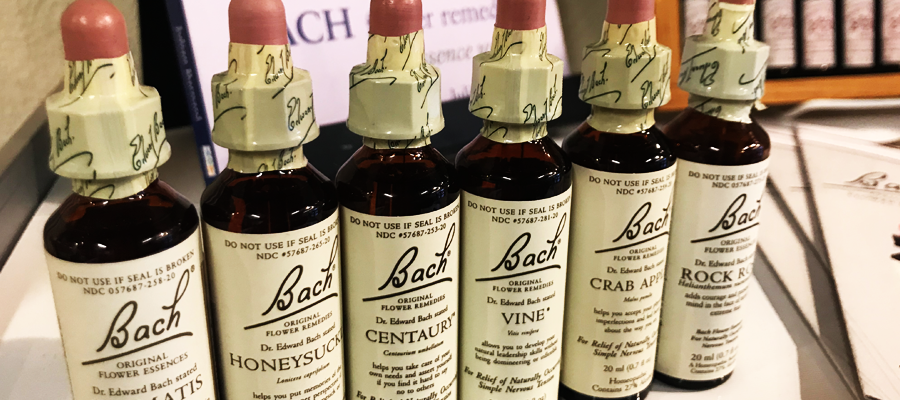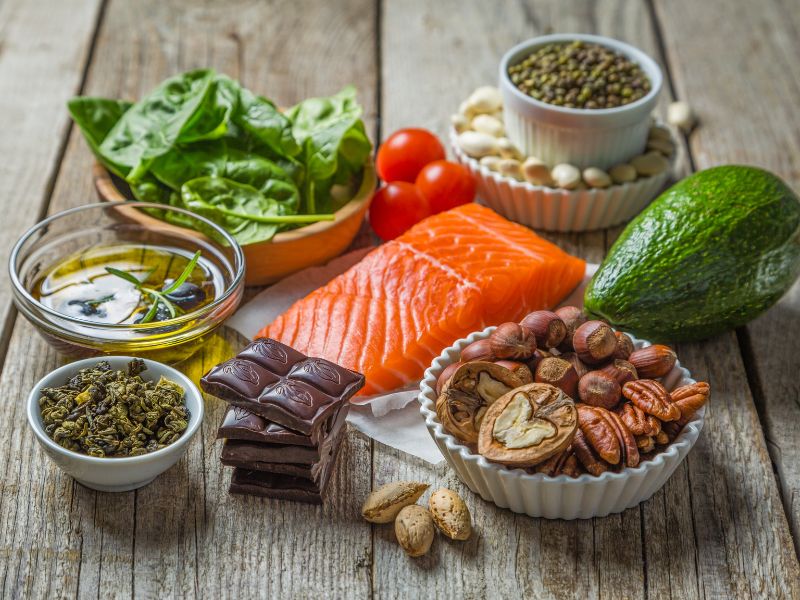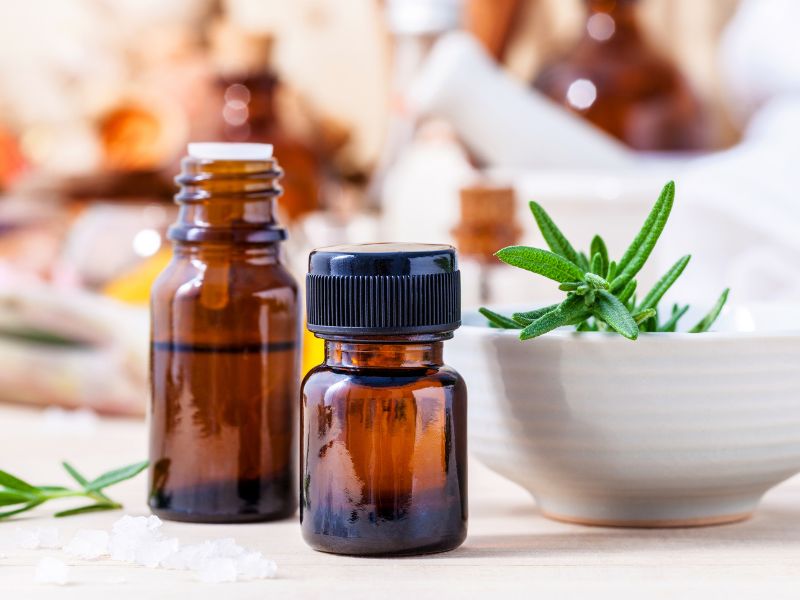The change from summer to fall can be full of new beginnings—from the start of school to autumn harvests, it is certainly a time for change. While this can be refreshing—all pumpkin spice and cornucopias—the season can also bring with it fresh anxieties for the new year. There’s less daylight, more sickness, crazy weather, and Halloween around the corner to overwhelm you with sugar-crazed kiddies. These are all things that can raise your stress levels and throw your body and mind off balance.
But did you know that you could rebalance with the help of flowers? Developed by Dr. Edward Bach, the flower essences system uses vital energy extracted from wild flowers, herbs, and trees, and includes a range of 38 remedies. Medicinal plants traditionally use the physical energy of the plant in the form of an active chemical constituent. Alkaloids, glycosides, saponins, and bitter principles are just a few of the constituents found in medicinal plants. Essentially, when we use an herbal remedy we are using a physical energy to rebalance the physical body. The Bach flower remedies, on the other hand, make use of vibrational energy.
Have you ever heard a violin player tune her instrument? With a tuner or a piano, she tunes the A string first. From there, she tunes the other three strings by playing them together, listening to whether the harmony is sharp or flat, adjusting the tuning pegs simultaneously. The sound, at first, sounds strange—like two whining cats. But once each string hits the right number of vibrations per second, the result is a perfect harmony, and the instrument is in tune. Similarly, each Bach remedy contains the vibrational pattern of the particular flower that resonates in harmony with a particular human vibration and personality pattern.
During times of change, like back to school or starting a new job, the Bach flower remedies can act as that perfectly tuned A string, helping to balance out our vibrations and create harmony. Dr. Bach believed that stressful mental states and disharmony produce worry, fear, exhaustion, impatience, resignation, and other negative emotional states. With times of emotional change, growth, and struggle, the flowers assist by balancing. Negative emotional states can drain your vitality, causing the body to lose its natural resistance to disease, leaving you vulnerable to infection and illness.
For example, are you struggling with the loss of daylight? Maybe recovering from a personal tragedy? The remedies Crab Apple, Elm, Larch, Oak, Pine, Star of Bethlehem, Sweet Chestnut, and Willow can all help with despondency or despair. Are you feeling a little low on endurance with a long semester lying ahead? Oak and Pine can help with inner strength and perseverance.
Flowers to the rescue! One remedy can be an essential item to take with you on the go, as it can be used (with other forms of treatment) in a physical or emotional emergency. Rescue Remedy® is a great “all-around” remedy to keep on hand for more intense situations. Keep it in your first aid kit and a couple of spare bottles in your handbag, briefcase, or glove box of your car. Rescue Remedy® includes the essences:
- Cherry plum for hysteria and uncontrolled emotional reaction
- Clematis for fainting and unconsciousness
- Impatiens for stress and tension
- Rock rose for extreme terror and panic
- Star of Bethlehem for shock, grief, and sorrow
Rescue remedy is even effective for the unconscious person. It can be administered by dabbing a drop or two on the lips, ears, wrist, neck, or palms of the hand.
Rescue Remedy can also be applied externally to bites, bruises, stings, burns, sprains, cuts, and wounds. It’s great for parents with kids who love to take advantage of playing outside, and it’s equally effective for animals and plants. Use a couple of undiluted drops directly on to the area. You can also learn more recipes like these in our accredited course, Energetic Modalities I: Flower Essences Online.
4 Ways to Use Rescue Remedy:
Keep it on hand for emergencies.
Take 3 to 4 drops (in water if available or undiluted if not) as often as needed.
Apply externally to bruises and cuts.
Always remember, Rescue Remedy is not a substitute for medical treatment. However, it can be invaluable support while waiting for care, and it will not interfere with any other medical treatment.
Flower essences, however, do have their limits. Bach flowers will not heal the physical body where an organ has been damaged beyond repair or where there is an inherited physical condition. Bach flowers help psychological and emotional states, but this does not mean the physical body will automatically be “cured.”
Flower remedies are particularly useful during convalescence or when we have to face difficult situations in life. So give flower essences a try! Stressful exams, visits to the dentist, court cases, and accompanying sugar-loaded zombies on their trick-or-treat route are just a few examples where flower essences can help.
This article is for informational purposes only. It is not intended to treat, diagnose, cure, or prevent disease. This article has not been reviewed by the FDA. Always consult with your primary care physician or naturopathic doctor before making any significant changes to your health and wellness routine.
Disclosure of Material Connection: This blog may contain affiliate links. I am disclosing this in accordance with the Federal Trade Commission’s 16 CFR, Part 255: “Guides Concerning the Use of Endorsements and Testimonials in Advertising.
Editor’s Note: This blog post was originally published in October 2013 and has been updated for accuracy. (February 2018)




